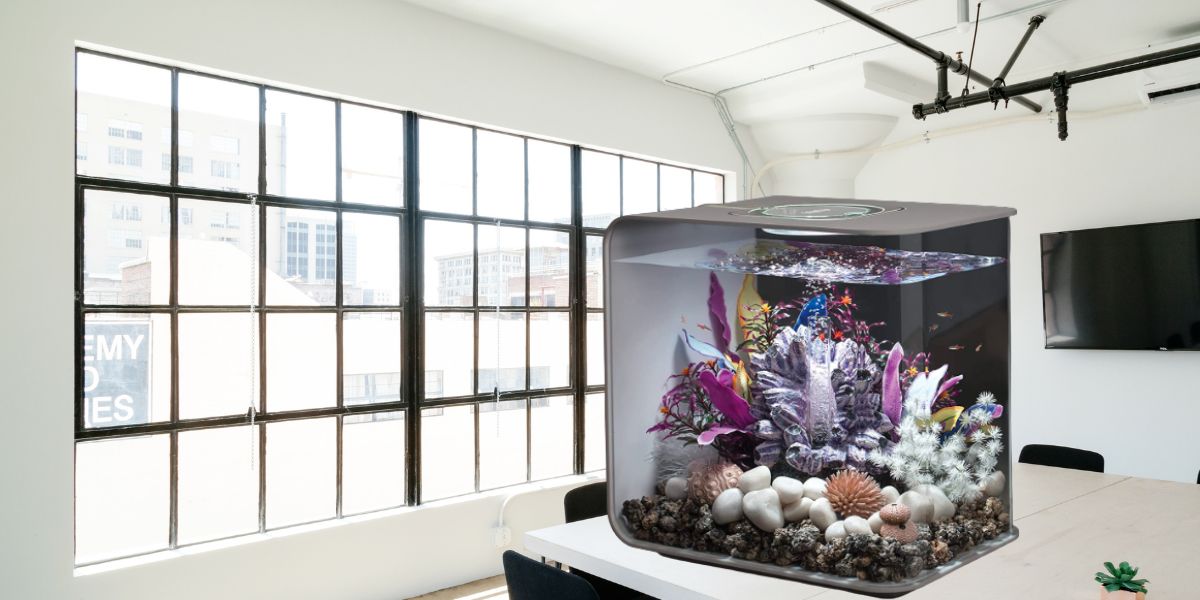Any aquarium setup must include aquarium filters because they support the upkeep of a stable and healthy aquatic habitat for fish and plants. But with so many options accessible, It can be difficult to choose the right aquarium filter size. One of the most crucial factors to consider is the capacity of the aquarium filter.
The right aquarium filter size must be selected in order to guarantee that the filter can handle the volume of water and keep an effective filtration system. We will go over the various things to take into account when choosing an aquarium filter size in this guide so that you can make an educated choice and maintain the health and happiness of your aquatic pets.
Read Also
What Size Tank is Best For a Betta Fish
Choose The Aquarium Filter Size
When choosing an aquarium filter size, keep in mind the height of your tank and the volume of water it holds.
Along with the tank’s size and water volume, a larger filter is required to guarantee proper filtration. The filter should generally be able to process the tank’s total water volume at least four times per hour.
You can use the following method to determine the necessary filter size based on tank size and water volume:
Tank capacity (in gallons) * 4 = Filter size (in gallons).
For instance, a filter that can handle at least 200 gallons per hour would be required if you have a 50-gallon tank (50 gallons x 4). It’s essential to remember that this formula only serves as a starting point; depending on other elements like the fish and plant population and the type of filtration, you might need to modify the filter size.
Fish And Plant Population
The quantity of fish and vegetation in your aquarium should also be taken into account when selecting the filter size. The amount of waste produced by the extra fish and plants in your tank will increase the size of the filter needed to manage the additional load. A larger filter can aid in the more effective waste processing and upkeep of your aquatic pets’ healthy habitat.
You can use the following formula to determine the necessary filter size depending on the population of fish and plants:
Tank volume multiplied by 4, plus 1 gallon for each inch of fish and 1 gallon for every 10 square inches of plant covering, equals filter volume (in gallons).
You would require a filter that can process at least 216 gallons per hour (50 gallons x 4 + 10 + 5), for instance, if your fish aquarium is 50 gallons and has 50 square inches of plant coverage and 10 inches of fish in it. Again, this method only serves as a starting point; depending on other elements like filtration type and flow rate, you might need to modify the filter size.
The Aquarium Filter Types
The sort of filtration system you intend to use is the third thing to take into account when selecting an aquarium filter size. There are many different types of filtration systems accessible, some of them are mechanical, biological, and chemical.
Every filtration system type has advantages and disadvantages and various filter sizes are needed to function effectively.
Mechanical Filtration Systems
Mechanical filtering systems use a physical barrier, like filter foam or a filter pad, to separate large particles and debris from the water. To manage the extra waste, these systems require a larger filter size.
Biological Filtration Systems
Beneficial bacteria are used in biological filtration devices to break down waste and transform it into less harmful substances. Since the bacteria colonies on the filter media can expand over time, these methods call for a smaller filter size.
Chemical Filtration Systems
Systems that use chemical filtering remove impurities from water using activated carbon or other chemical media. These systems need medium-sized filtration because the chemical media can clog and need to be changed frequently.
It’s essential to choose the filter type that best meets your requirements and the needs of your aquatic pets when deciding on the size of an aquarium filter. While some systems might function more effectively with a bigger filter size, others might work better with a smaller filter size. When choosing the correct filter size for your aquarium, it’s important to consider the kind of filtration device you intend to use.
The Aquarium Filter Maintenance
The amount of upkeep necessary to keep the filter operating effectively should be taken into account when selecting the size of an aquarium filter. It’s very important to pick a filter that is simple to clean and keep because failing to do so can result in poor water quality and even harm to your aquatic animals.
When choosing a filter, take into account how simple the filter media will be to keep and clean as well as how frequently it will need to be changed. The general maintenance needed for your aquarium may differ depending on which filters need to be cleaned and their media replaced more frequently than others.
Conclusion
To keep your aquatic pets’ habitat stable and healthy, the correct aquarium filter size is crucial. The size of your tank and the amount of water it can hold, the variety of fish and plants it contains, the type of filtering system you intend to use, and the amount of upkeep necessary to keep the filter operating correctly should all be taken into account when choosing a filter size.
These recommendations will help you choose the right size filter for your tank, preserving the health and happiness of your aquatic animals. Don’t forget that choosing the proper filter size is only the first stage in keeping an aquarium in good health. To keep your aquatic pets healthy, frequent upkeep, appropriate feeding, and water changes are also essential.

